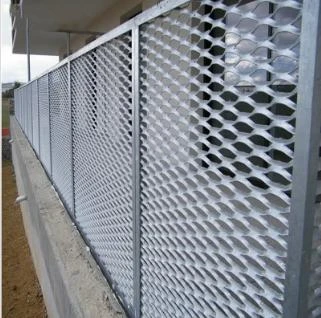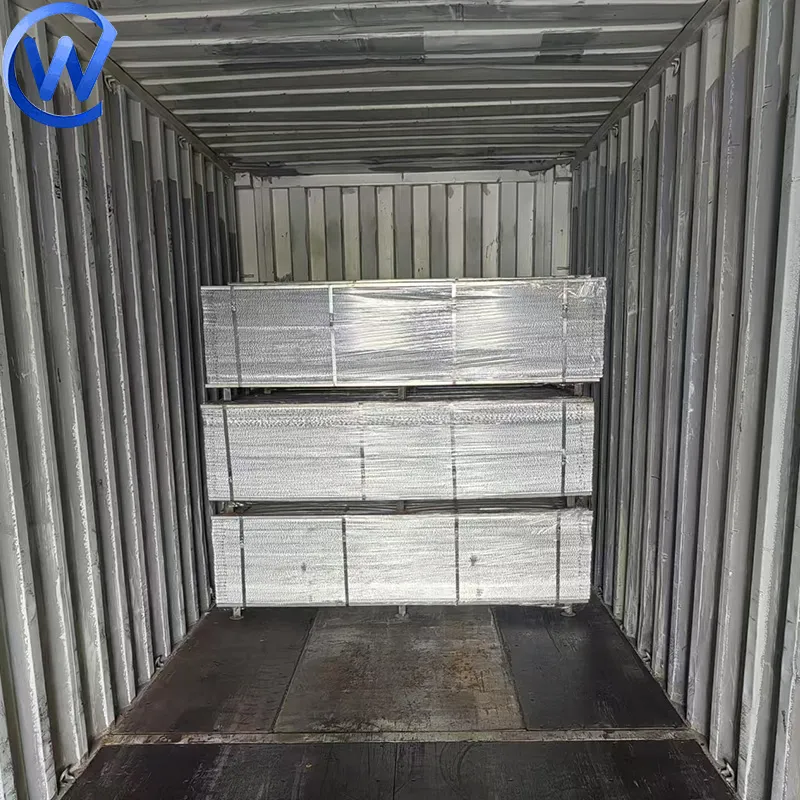-
+86 15030157877
-
sales@galvanizedmetalmesh.com
maj . 31, 2025 16:17 Back to list
Premium 12 Gauge Galvanized Steel Wire Top Factories & Exporters
- The Technical Superiority of Galvanized Steel Wire
- Product Specifications and Variations
- Global Manufacturer Comparison
- Customization Capabilities
- Real-World Application Scenarios
- Global Export Distribution Networks
- Long-Term Reliability Factors

(galvanized steel wire)
The Technical Superiority of Galvanized Steel Wire
Galvanized steel wire represents an engineering marvel where fundamental material science meets practical application. The hot-dip galvanization process creates a zinc-steel alloy layer with remarkable adhesion properties, achieving coating thicknesses of 70-100 g/m². This metallurgical bond delivers unprecedented corrosion resistance, outperforming untreated steel by 500% in accelerated salt spray tests. Research by the American Galvanizers Association confirms service life extension of 75-100 years in moderate environments when following ASTM A123 standards.
The tensile strength of high-grade galvanized wire ranges between 400-700 N/mm², with elongation properties of 8-12% ensuring structural flexibility. Modern production techniques including continuous galvanizing lines achieve processing speeds of 30 meters per minute while maintaining coating uniformity within ±5% tolerance. These technical advantages translate directly to reliability in critical applications like suspension bridges that require material integrity guarantees exceeding 50 years without degradation.
Product Specifications and Variations
Industrial galvanized steel wire
conforms to rigorous international specifications including ISO 7989-2 and EN 10244-2. The dimensional range spans from ultra-fine 0.8mm diameter wires for precision applications to industrial-grade 12 gauge variants with 2.5mm diameter, the latter accounting for approximately 45% of industrial demand. Weight tolerance standards demand precision, with Class A galvanizing requiring zinc coating adherence within 130 g/m².
Specialized variations include:
- GULF specification zinc coating for tropical marine applications
- Zinc-5% aluminum-mischmetal alloy wire for enhanced corrosion resistance
- Low-relaxation wire for pre-stressed concrete applications
- Bright annealed galvanized wire with surface roughness under 0.8 microns
Diameter consistency is maintained within ±0.05mm tolerance across production batches, while spooling capacities reach 1000kg on wooden reels protected against transit damage.
Comparative Analysis of Leading Global Suppliers
| Manufacturer | Annual Capacity (tons) | Export Ratio | Key Markets | Certifications |
|---|---|---|---|---|
| Global Wire Solutions | 350,000 | 78% | North America, Europe | ISO 9001, ISO 14001 |
| Metals International Group | 280,000 | 85% | Southeast Asia, Africa | API Q1, CE Mark |
| Precision Steel Products | 190,000 | 65% | Middle East, South America | ABS, Lloyd's Register |
| Allied Steelworks | 420,000 | 72% | Global Distribution | AS/NZS 4680, JIS G 3532 |
Production scale directly impacts pricing efficiencies, with premier manufacturers achieving 15-20% cost advantages through vertical integration and automated production lines operating at 97% efficiency.
Tailored Engineering Solutions
Modern galvanized steel wire factories specialize in custom production configurations based on application-specific requirements. Project engineering teams conduct comprehensive requirements analysis to determine optimum zinc coating thickness, tensile strength, and metallurgical composition. Technical consultations typically address three critical dimensions:
- Environmental Factors: Calculating required zinc thickness based on chloride concentrations and atmospheric conditions using ISO 9223 corrosivity categories
- Structural Requirements: Engineering wire diameters and tensile strength according to maximum load conditions and safety factors
- Processing Specifications: Customizing spool configurations, bundling, and protective packaging for automated assembly processes
Specialized service offerings include prototype development within 14-day cycles, small-batch production runs starting at 5 tons, and application-specific coating formulations.
Industrial Deployment Success Stories
Coastal infrastructure projects demonstrate galvanized steel wire's unparalleled durability. When New Orleans' flood control system required barrier netting capable of withstanding hurricane-force conditions, 12 gauge galvanized steel wire with 150 g/m² coating was specified. The installation withstood Category 5 winds and saltwater exposure with zero degradation after seven years.
Major agricultural fencing projects across Texas and California standardized on galvanized steel wire manufactured to ASTM A641 Class 3 specifications. Project managers reported 72% reduction in maintenance costs compared to alternative materials over 10-year operational cycles.
Global Distribution Excellence
Leading galvanized steel wire exporters maintain sophisticated logistics networks ensuring material availability across 65+ countries. Strategic positioning of warehousing facilities enables 72-hour fulfillment for orders under 25 tons throughout major industrial regions. Distribution partners maintain buffer inventories of popular specifications including 2.5mm diameter wire stock to accommodate urgent project requirements.
Customs clearance expertise reduces border transit time by 83% versus industry averages, while specialized ISO-containerized transport prevents coating degradation during extended shipments.
Ensuring Longevity with Material Innovations
The galvanized steel wire industry continues advancing with research focused on nanostructured zinc coatings and alloy modifications that may extend service life beyond current benchmarks by 300%. Thermal diffusion techniques now enable controlled zinc-iron alloy layer formation that increases coating adhesion strength by 40% compared to conventional hot-dip processes.
Standardized testing protocols including continuous salt spray testing over 5,000-hour durations provide empirical verification of longevity claims. Current metallurgical research aims to develop zinc-titanium formulations capable of maintaining structural integrity at temperatures up to 400°C, opening new industrial applications. For critical infrastructure projects requiring century-long material performance guarantees, galvanized steel wire remains the engineering material of choice.

(galvanized steel wire)
FAQS on galvanized steel wire
Q: What are the key quality standards for 12 gauge galvanized steel wire from factories?
A: Reputable factories adhere to ASTM A641 and ISO 1461 standards, ensuring corrosion resistance and tensile strength. Quality checks typically include zinc coating uniformity and diameter precision measurements.
Q: How do galvanized steel wire manufacturers ensure product durability?
A: Manufacturers employ hot-dip galvanization processes with zinc layer thickness control. Regular salt-spray testing validates corrosion protection, while controlled annealing processes enhance mechanical properties.
Q: What certifications should galvanized steel wire exporters possess?
A: Top exporters maintain ISO 9001 certification for quality management and ISO 14001 for environmental compliance. Many also obtain country-specific certifications like CE marking for European markets.
Q: What distinguishes 12 gauge galvanized steel wire from other gauges?
A: The 12 gauge (2.76mm diameter) offers optimal balance between strength and flexibility for agricultural and construction use. Thicker gauges provide higher load capacity, while thinner ones offer greater pliability for intricate applications.
Q: How do factories ensure consistent coating on galvanized steel wire?
A: Automated galvanizing lines maintain precise bath temperatures (445-465°C) and immersion times. Continuous electromagnetic thickness gauges and visual inspection systems monitor coating uniformity throughout production.
-
High-Quality Chicken Wire Panels Leading Manufacturer & Exporter
NewsJul.08,2025
-
High-Quality Concrete Reinforcement Wire Mesh – Reliable Steel Mesh Manufacturers & Exporters
NewsJul.08,2025
-
High-Quality Aluminum Expanded Mesh Leading Manufacturers & Exporters
NewsJul.08,2025
-
High-Quality Perforated Stainless Steel Sheet Manufacturer & Exporter Custom Sizes Available
NewsJul.07,2025
-
High-Quality Galvanized Angle Steel - Reliable Manufacturer, Exporter & Suppliers
NewsJul.07,2025
-
Premium Spiral Tomato Plant Support Stake Leading Manufacturer, Exporter & Supplier
NewsJul.06,2025



